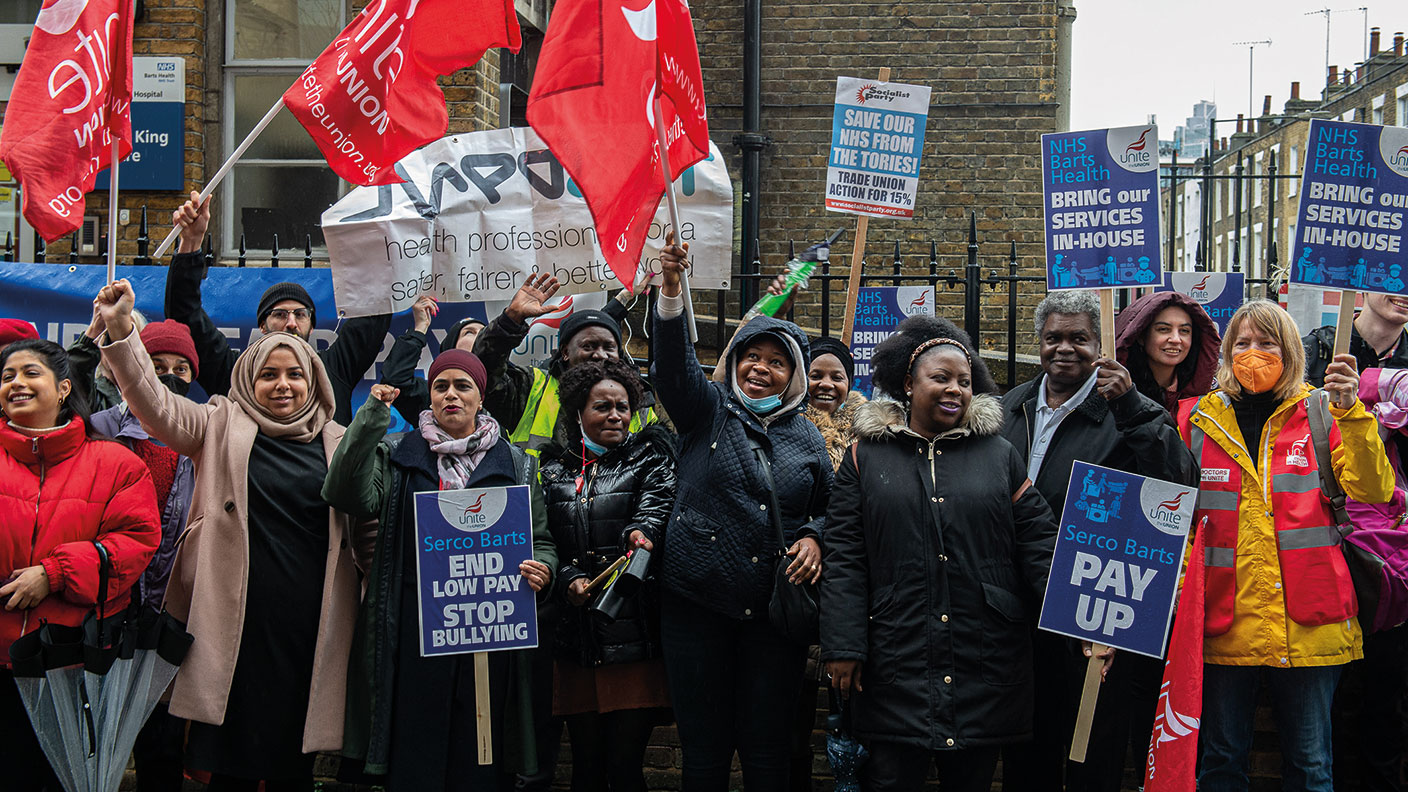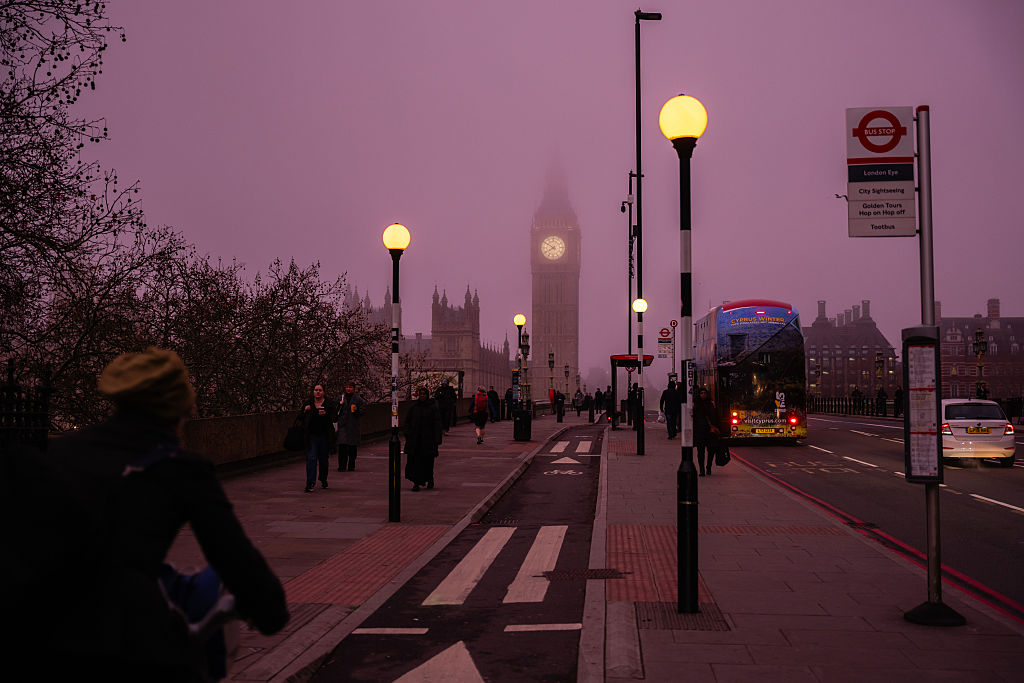Stagflation is sapping the UK's economic growth
For the first time in decades, the economy is staring at stagflation (high inflation and slow growth).

In March 2021, the annual inflation rate for the UK stood at just 0.7% on the consumer price index (CPI) measure, says Mehreen Khan in The Times. A year later it has surged to 7%, the highest reading since 1992, and hasn’t peaked yet. This month’s 54% hike in the energy price cap should take CPI inflation above 8% for April.
“Energy prices have reached another stratosphere,” says Sanjay Raja of Deutsche Bank. Pump prices rose 12.6p per litre between February and March, while heating oil costs surged 44%. While price rises should moderate a little over the summer, come October “we see headline CPI pushing above 9.5%” year-on-year.
There are already signs that “rocketing prices for… everything from petrol at the pumps, to food bills, rent and eating out” are sapping economic growth, says Alex Brummer in the Daily Mail. After growing 0.8% in January, GDP “barely expanded at all in February”. For the first time in decades, the economy is staring at stagflation (high inflation and slow growth). The “one glimmer of hope” is that unemployment is now back to pre-pandemic levels and vacancies at a record high.
MoneyWeek
Subscribe to MoneyWeek today and get your first six magazine issues absolutely FREE

Sign up to Money Morning
Don't miss the latest investment and personal finances news, market analysis, plus money-saving tips with our free twice-daily newsletter
Don't miss the latest investment and personal finances news, market analysis, plus money-saving tips with our free twice-daily newsletter
Inflation will get entrenched
However, those staff shortages suggest that what started as an energy and commodity price spike could turn into wider and more embedded inflation, says Jeremy Warner in The Daily Telegraph. “We are already seeing some quite fruity wage settlements… another period of union militancy looks pretty much guaranteed.”
Central bankers across developed economies were too slow to react to rising inflation, says Tim Wallace in the same paper. The Bank of England only started to raise interest rates in December, despite warning signs appearing months earlier that price rises could spiral out of control.
The Bank’s defenders argue that there is little interest rate rises could have done to control soaring global energy prices. The trouble is that when central banks fall behind the curve on inflation they need to hike rates more aggressively later on, which brings greater risk of tanking economic growth.
The regime is changing
It’s not just the UK. Inflation is running at 8.5% in the US and 7.5% in the eurozone. Yet some investors still think this spike is temporary, says James Mackintosh in The Wall Street Journal. “Bond prices assume that inflation will come back to target without the Fed having to keep rates high.” Markets imply an average US CPI of 2.4% for the five years after 2027. That is “probably a mistake”. From the “retreat of globalisation”, to the costs of decarbonisation and more military spending, “a bunch of longer-term inflationary pressures are on the way”. With stocks and bonds both vulnerable to higher interest rates, investors are learning that “inflation hurts”.
Get the latest financial news, insights and expert analysis from our award-winning MoneyWeek team, to help you understand what really matters when it comes to your finances.
Alex is an investment writer who has been contributing to MoneyWeek since 2015. He has been the magazine’s markets editor since 2019.
Alex has a passion for demystifying the often arcane world of finance for a general readership. While financial media tends to focus compulsively on the latest trend, the best opportunities can lie forgotten elsewhere.
He is especially interested in European equities – where his fluent French helps him to cover the continent’s largest bourse – and emerging markets, where his experience living in Beijing, and conversational Chinese, prove useful.
Hailing from Leeds, he studied Philosophy, Politics and Economics at the University of Oxford. He also holds a Master of Public Health from the University of Manchester.
-
 Profit from leisure sector as consumers go on spending spree
Profit from leisure sector as consumers go on spending spreeThe UK leisure sector had a straitened few years but now have cash in the bank and are ready to splurge. The sector is best placed to profit
-
 Nationwide: Annual house price growth slows to lowest level in almost two years
Nationwide: Annual house price growth slows to lowest level in almost two yearsThe average house price went up by just 0.6% between December 2024 and December 2025, Nationwide Building Society said
-
 Market predictions for 2026: Will Dubai introduce an income tax?
Market predictions for 2026: Will Dubai introduce an income tax?Opinion My 2026 predictions, from a supermarket merger to Dubai introducing an income tax and Britain’s journey back to the 1970s
-
 The steady rise of stablecoins
The steady rise of stablecoinsInnovations in cryptocurrency have created stablecoins, a new form of money. Trump is an enthusiastic supporter, but its benefits are not yet clear
-
 Goodwin: A superlative British manufacturer to buy now
Goodwin: A superlative British manufacturer to buy nowVeteran engineering group Goodwin has created a new profit engine. But following its tremendous run, can investors still afford the shares?
-
 A change in leadership: Is US stock market exceptionalism over?
A change in leadership: Is US stock market exceptionalism over?US stocks trailed the rest of the world in 2025. Is this a sign that a long-overdue shift is underway?
-
 Modern Monetary Theory and the return of magical thinking
Modern Monetary Theory and the return of magical thinkingThe Modern Monetary Theory is back in fashion again. How worried should we be?
-
 Metals and AI power emerging markets
Metals and AI power emerging marketsThis year’s big emerging market winners have tended to offer exposure to one of 2025’s two winning trends – AI-focused tech and the global metals rally
-
 King Copper’s reign will continue – here's why
King Copper’s reign will continue – here's whyFor all the talk of copper shortage, the metal is actually in surplus globally this year and should be next year, too
-
 The coming collapse in the jobs market
The coming collapse in the jobs marketOpinion Once the Employment Bill becomes law, expect a full-scale collapse in hiring, says Matthew Lynn